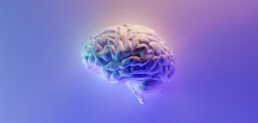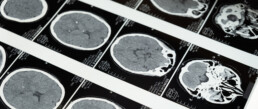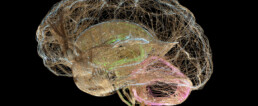Seed Grant
We are pleased to announce the UTCSP SEED GRANT opportunity!
This opportunity will provide funding for 1 year, with up to $30,000. Principal applicants must be UTCSP members with a faculty appointment to the University of Toronto who are able to hold research funds at the University of Toronto.
Priority areas include:
- Projects that address the opioid crisis.
- Interdisciplinary/cross faculty collaborative pain research.
- Pain education research.
Full information to apply: here.
Application form: here.
How to apply: Please send the application package (all documents in one PDF) to utcsp@utoronto.ca.
Deadline:
Oct 13 2023
Grant amount:
$30,000
History of the UTCSP
“The UTCSP has provided me with an unparalleled network of scientific and collegial support. It has broadened the scope and potential of my pain research to change clinical practice. In addition, the centre has provided my doctoral trainees with unique development opportunities. Taken together, the UTCSP has strengthened my ability to be a productive scientist and therefore contributed significantly to my tenure appointment.” -Dr. Craig Dale
History
The establishment of the UTCSP in 1999 was novel for that time since no such centre existed elsewhere in the world. It was also somewhat fortuitous in that the University of Toronto administration decided at this time that its different faculties and programmes needed better integration in their educational and scholarly programmes. With that in mind, it developed in the late 1990s a request to faculties for applications to establish a pioneering UofT-funded academic programme that would bring together staff and students in different faculties to engage in interfaculty/interdisciplinary educational and scholarly activities.
Also fortuitous was that the Council of Health Sciences Deans was chaired at that time by Barry Sessle, the Dean of the Faculty of Dentistry who happened to be a pain researcher and President of The International Association for the Study of Pain. It also happened at that time that there was a cadre of pain clinicians, researchers, educators and trainees spread around the different UofT health science faculties and their affiliated hospitals, but there was limited collaboration and coordination of their educational and scholarly activities. Dr Sessle and several others in the UofT pain community (e.g. Drs. Jonathan Dostrovsky, Allan Gordon, David Mock, Michael Salter, Bonnie Stevens, Judy watt-Watson) realised that pain was an ideal topic for such an interdisciplinary focus as envisaged by the UofT administration and an opportunity to bring together the diverse group of pain clinicians, researcher and educators and trainees in a Centre fostering collaboration and advancement of pain education and research at UofT.
Such an approach also was in line with emerging concepts of the value of adopting a biopsychosocial approach to pain education, research and management. The cooperation and support of all the health sciences deans were gained, an application was put together and submitted, and this proposal was the one selected for the UofT funding.
Administrative History
The administrative HUB of the UTCSP is based in the Faculty of Dentistry, with an administrative structure and governance model that was developed over time. The 4 current active committees include the Executive, KT, Research, Education committees, as well as subcommittees, working groups and the IPC infrastructure. Dr. Michael Salter from the department of Physiology, Faculty of Medicine and Sick Children’s Hospital was the first UTCSP director (2000-2009). Dr. Bonnie Stevens from the Lawrence S Bloomberg Faculty of Nursing and Sick Children’s Hospital then became Director (2010-2019). Dr. Robert Bonin from the faculty of Pharmacy assumed the intern directorship role (2020). For the past 4, the UTCSP has been co-directed by Rob Bonin from the Faculty of Pharmacy and Rachel Bosma from the Faculty of Dentistry. Membership is from across campus across 7 different faculties and includes members from the Toronto academic hospitals.
Key Initiatives
For over 20 years, the UTCSP has delivered each year the Interfaculty Pain Curriculum to approximately 20,000 students from 78 different disciplines at UofT. These include Dentistry, Medicine, nursing, pharmacy, social work, physiotherapy, occupational therapy, physician assistants,
100 Members of the UTCSP contribute to this one-week educational initiative each year by helping to formulate each year’s programme, by giving lectures, or by acting as facilitators in break-out small-group sessions with students.
The UTCSP is also part of an educational initiative at UofT, The Pain Medicine Residency Program, which links residents with UTCSP scientists and supports pain training.
The UTCSP’s Annual Scientific Meeting brings together its members to learn more about the Centre’s recent activities and recent pain research findings from presentations by its members and invited external speakers.
Support of UTCSP trainees is provided through travel awards (e.g. to Canadian Pain Society annual meeting) and UTCSP Pain Scientist Awards, trainee orientation/welcome events, pain schools, professional development and training opportunities, and more. This has had a substantial impact; approximately 80% of UTCSP trainees remain in pain research today.
Mentor of the Month - Dr. Andrea Furlan
Introducing Dr. Andrea Furlan, a physician and Senior Scientist. Learn more about her journey, delve deeper into her extraordinary accomplishments, and uncover future prospects she envisions for the realm of pain study.
Dr. Andrea Furlan is a physician and Senior Scientist at the Kite Research Institute, Toronto Rehabilitation Institute at the University Health Network (UHN). She completed her residency in Physiatry at the University of São Paulo, Brazil and her PhD in Epidemiology at the University of Toronto, Canada. Dr. Furlan’s research largely focuses on Rehabilitation Medicine and alternative treatments for chronic pain. She has published over 100 peer-reviewed articles and has received awards such as the 2020 Pain Society of Alberta Pain Excellence Award, and the 2021 Canadian Pain Society Excellence in Pain Mentorship Award. In addition to her academic achievements, Dr. Furlan is an excellent and well-known science communicator, with a YouTube channel that teaches her 500,000 subscribers about chronic pain and its management.
We asked Dr. Furlan a few questions about her career:
What inspired you to focus on pain?
In my teen years, I suffered from terrible, debilitating, monthly menstrual cramps. I missed many social events, school days, exams, and the medications destroyed my stomach. When I got to medical school (in Brazil) I came across physiatry, the medical specialty for people with disabilities. As an intern in general internal medicine, one of the patients I admitted for investigation had pain all over her body. She ended up getting a lot better when a physiatrist came and did a single session of acupuncture. I became fascinated by the endogenous opioid system and decided to become a pain doctor, and physiatrist.
What have been some of the great highlights in your career thus far?
When I came to Canada, my first job was with the Cochrane Collaboration Back Review Group. After authoring many Cochrane reviews, I was invited to lead the research team for the first Canadian Opioid Guideline, which was published in 2010. In 2013, I heard about Project ECHO in the US. I went there with a group of colleagues from Canada, and when we returned, we started the first ECHO hub in Canada, for Chronic Pain and Opioid Stewardship, and soon we will be celebrating 10 years. We now have expanded ECHO to more than 30 conditions in Ontario, and the ECHO chronic pain has expanded to many other Canadian Provinces. More recently, I decided to start a YouTube channel, and write a book. My channel has just passed 550K subscribers and 45 million views.
What do you think is the next big thing (therapy, discovery, field of study) for pain?
I have no doubt that the next big thing will be how we tap into the brain to change neuroplasticity of pain. Every time I open a pain journal there are so many new discoveries of the amazing ability of the brain and its connections to the immune system, neuroendocrine system, and gut microbiome. I can’t keep up with all the neuroscience publications, but I think we will have a revolution in the way we treat pain, especially chronic pain.
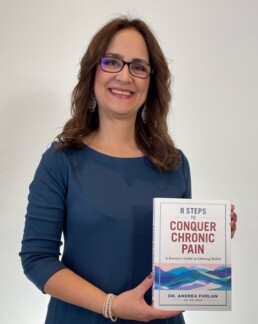
Non-pharmacological Skill-Based Invention as an Alternative to Reduce Opioid Use in Chronic Pain
Opioids are often used to treat non-malignant pain. However, it has been suggested that opioids are not any more effective than non-opioid treatments and could potentially be harmful in the short- and long-term.
Written by:
Vaidhehi Veena Sanmugananthan
Edited by:
Georgia Hadjis
Despite this, opioids remain heavily prescribed, with over 142 million opioid prescriptions being administered in the US in 2020. The best methods to reduce opioid use are not yet clear. For example, opioid tapering has been shown to be too abrupt and lacks alternatives, which could potentially lead to harmful and suicidal behaviors. Alternatively, UTCSP scientist Dr. Andrea Furlan and her team suggest that multimodal non-pharmacological treatment approaches to improving chronic non-malignant pain may help reduce the harm associated with tapering. As such, they conducted the I-WOTCH (Improving the Wellbeing of People With Opioid Treated Chronic Pain) randomized clinical trial (RCT) to test the effectiveness of these self-management approaches to improve pain-related disability and reduce opioid use in those with non-malignant chronic pain.
Six-hundred-and-eight adult participants taking strong opioids for their non-malignant chronic pain (e.g.buprenorphine, morphine, fentanyl, methadone, oxycodone, tapentadol, tramadol, and others), were randomized 1:1 to either usual care or 3-day-long group sessions which focused on skill-based learning. Individuals who underwent the group sessions also received supplementary 1-on-1 support sessions from a nurse or lay-individual lasting 12 months. These studies were conducted in primary-care facilities in England. The primary outcome measures were the proportion of individuals that came off opioids after 12 months, and changes in the Patient-Reported Outcomes Measurement Information System Pain Interference Short Form 8a (PROMIS-PI-SF-8), which measured pain interference towards daily living.
At the 12-month follow-up, in which 433 participants returned, there were no statistically significant differences on PROMIS scores between the two groups ( −4.1 in the intervention and −3.17 in the usual care groups; between-group difference: mean difference, −0.52 [95% CI, −1.94 to 0.89]; P = .15). Discontinuation of opioids occurred in 29% (65/225) of the intervention group and 7% (15/208) of the usual care group. While serious adverse events were reported in 8% (25/305) of the intervention group and 5% (16/303) of the usual care group, none were related to the intervention itself. Four individuals received care for probable opioid withdrawal.
The results suggest that a skill-based learning intervention helped reduce patient-reported use of opioids in comparison to usual care. However, this non-pharmacological intervention did not significantly impact pain interference on daily living. The utility of these skill-based interventions as a way to reduce opioid use for chronic pain and avoid harmful effects of opioid tapering should be investigated further.
The results suggest that a skill-based learning intervention helped reduce patient-reported use of opioids in comparison to usual care.
Assessing the potential use of chairside ultrasonography in diagnosing masticatory myofascial pain syndrome
Masticatory myofascial pain syndrome is characterized by localized musculoskeletal pain in orofacial muscles such as the masseter and temporalis. In this pain syndrome, hyper-irritated nodules referred to as myofascial trigger points (MTrPs) cause local pain and mimic odontogenic pain when palpated.
Written by:
Quinn Pauli
Edited by:
Georgia Hadjis
MTrPs palpation is currently used to diagnose masticatory myofascial pain syndrome, where force is applied to masseter and temporalis muscles to assess pain and variation in muscle texture. However this examination has limited diagnostic accuracy and cannot provide information on the attributes of MTrPs. Ultrasonography, a sound wave-based imaging tool currently used in the diagnosis of musculoskeletal pathology, may have additional utility in diagnosing masticatory pain syndrome. UTCSP members Drs. Michael Goldberg, Howard Tenenbaum, Amir Azarpazhooh and their colleagues conducted a pragmatic cross-sectional clinical diagnosis study to assess the potential utility of ultrasonography in identifying MTrPs.
The primary aim of this study was to identify the concordance between ultrasonography and palpation in detecting MTrPs. Fifty-seven participants suspected of having temporomandibular disorder received both clinical palpation from a pain specialist and ultrasonography administered by a dentist. The two diagnostic methods were then compared across number of MTrPs identified, their distribution across muscle sections, and pain occurrence. The authors found that palpation identified more MTrPs and affected areas compared to ultrasonography. Ultrasonography and palpation concurred moderately-to-substantially in identifying the quantity of MTrPs and involved muscle sections, however they disagreed on the location of the MTrPs within muscle sections.
The results of this study indicate that ultrasonography, which is objective and straightforward to implement by endodontists, has the potential to be used as a diagnostic tool for masticatory myofascial pain syndrome. Compared to palpation, ultrasonography may enhance patient experience during examination while preventing misdiagnosis and unnecessary treatments that could exacerbate pain.
The results of this study indicate that ultrasonography, which is objective and straightforward to implement by endodontists, has the potential to be used as a diagnostic tool for masticatory myofascial pain syndrome.
UTCSP Translational Seminar Series with Dr. Tasha Stanton
Dr. Tasha Stanton, Associate Professor in Clinical Pain Neuroscience, from University of South Australia, speaks about ddvances in exercise-based virtual and mediated reality for chronic pain.
On Thursday May 4th 2023 from 4-6 pm, don’t miss the chance to hear from Dr. Tasha Stanton (Associate Professor in Clinical Pain Neuroscience, from University of South Australia). Dr. Stanton’s talk: Advances in exercise-based virtual and mediated reality for chronic pain. After the 45-minute talk, there will be a 15-minute Q&A, followed by light refreshments.
Hosted by the UTCSP Knowledge Translation Committee Trainee Members, this first talk in a series of translational seminars is an opportunity to hear from speakers addressing various topics related to pain-science and pain-research.
Speaker:
Dr. Tasha Stanton
Associate Professor in Clinical Pain Neuroscience, University of South Australia
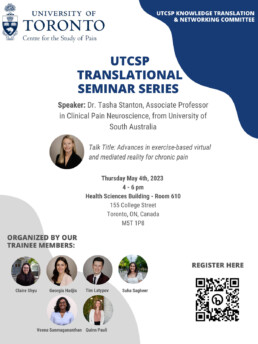
Date:
Thursday, May 4th 2023
Location:
Health Sciences Building
Room 610
The impact of cannabis industry sponsorship on the research process
The “funding effect” is an empirically biased effect in which industry-funded research is more likely to produce favourable results and conclusions that benefit industry sponsors. The underlying mechanisms that encourage the funding effect may include publication bias and selective methodology/experimental design. Scientists may adjust their research agendas based on the needs of the industry, given that these industry partnerships offer a wealth of funding. These industry sponsorships may also lead to financial conflict of interests. Despite the positive impact industry sponsorship and corporate research have had on research and innovation, there is still concern surrounding the implications of this relationship on research integrity and policy development.
Written by:
Vaidhehi Veena Sanmugananthan
Edited by:
Georgia Hadjis
Leading up to Canada’s legalization of cannabis, cannabis companies partnered with academics to research the understanding, medical potential, and creation of cannabis compounds to make research claims for the cannabis market. UTCSP scientist Dr. Daniel Buchman, UofT Lawrence S. Bloomberg Faculty of Nursing co-PI Dr. Quinn Grundy, and colleagues conducted a meta-research study to 1) identify research with statements of disclosure addressing funding or financial relationships with Canadian cannabis companies, 2) describe the research being conducted with cannabis companies and sponsorship towards the studies, and 3) identify the demographics of the participants included.
From May – August 2021 the authors identified sampling licensed, prominent Canadian cannabis companies, their subsidiaries, and searching each company in the PubMed conflict of interest statement search interface. The authors included 156 articles with disclosures of support or conflicts of interest with Canadian cannabis companies. Overall, the authors found evidence of the involvement of Canadian cannabis companies in the conduct and sponsorship of research. Over half of the articles were not primarily cannabis-focused but listed a cannabis company in the disclosure statement. Of the cannabis-focused articles, topics ranged from: cannabis as a treatment of medical conditions (21%); mediating harm and substance use reduction (14%); product safety (14%); and preclinical animal studies (8%). Demographics were generally under-reported in human empirical studies, most of which were adults (90%) and predominantly white (82%) and male (59%).

The authors suggest that cannabis companies in Canada conduct similar research to other industries (pharmaceuticals, tobacco, alcohol, food) by:
- sponsoring research that aids product development and testing;
- expanding use indication, and;
- financially supporting key-opinion leaders.
The largest proportion of studies focused on the use of cannabis for different conditions (e.g., chronic pain) and harm reduction, indicating that discussions are occurring in this industry surrounding harm reduction through research-related partnerships. The under-reporting and lack of diversity in demographics warrants further research to incorporate an intersectional lens and involve other communities to enhance equity-oriented research in this field. It is suggested that policy makers keep a close eye on and prioritize independence and community engagement in the research process to ensure high quality, independent cannabis research.
Neurons in the somatosensory cortex encode multiple features of vibrotactile signals using firing frequency
Vibrotactile sensation is processed in the somatosensory cortex in the brain. Neurons can encode different properties of stimuli, including the frequency or magnitude of a sound or vibrotactile sensation, in their firing frequency. Pyramidal neurons in the primary sensory cortex (S1), however, have a limited firing rate and cannot match the frequency of fast vibrotactile inputs one-to-one. To assess how pyramidal neurons encode features of vibrotactile sensations delivered by primary afferents, UTCSP member Dr. Steven Prescott and colleagues created computational simulations and performed electrophysiological recordings on slices of these neurons in S1 to explore individual and population-level coding.
Written by:
Quinn Pauli
Edited by:
Georgia Hadjis
Leading up to Canada’s legalization of cannabis, cannabis companies partnered with academics to research the understanding, medical potential, and creation of cannabis compounds to make research claims for the cannabis market. UTCSP scientist Dr. Daniel Buchman, UofT Lawrence S. Bloomberg Faculty of Nursing co-PI Dr. Quinn Grundy, and colleagues conducted a meta-research study to 1) identify research with statements of disclosure addressing funding or financial relationships with Canadian cannabis companies, 2) describe the research being conducted with cannabis companies and sponsorship towards the studies, and 3) identify the demographics of the participants included.
An adaptive exponential integrate-and-fire computational model was first adjusted to match the properties of S1 pyramidal neurons. To simulate physiological electrical “noise” due to random opening and closing of ion channels or background synaptic input, the model was tested in the presence or absence of uncorrelated noise. Using this model, the authors found that without the inclusion of noise, higher frequency inputs were coded in a nearly identical pattern as lower frequency inputs due to limitations in neuronal firing rates. However, when noise approximating in vivo conditions was included in the model, cycles of stimulation were skipped irregularly, resulting in spiking intervals that correlated with the frequency of the input. By delivering and recording electrical signals from neurons directly, the authors also found that S1 neurons fire intermittently during high frequency inputs, which allowed population responses to be modulated in sync with input frequency.
The authors found that without the inclusion of noise, higher frequency inputs were coded in a nearly identical pattern as lower frequency inputs due to limitations in neuronal firing rates. However, when noise approximating in vivo conditions was included in the model, cycles of stimulation were skipped irregularly, resulting in spiking intervals that correlated with the frequency of the input.
Together, the simulations and electrophysiological recordings indicate that S1 neurons can encode information about the frequency and amplitude of periodic vibrotactile inputs using firing intervals and rate, respectively. Crucially, this coding is aided by physiological noise, which modulates the reliability of firing without disrupting its precision. Overall, this study provides novel insights on how neurons encode multiple stimulus features in their firing rates.
UTCSP Scientific Meeting 2023
Join us for our 2023 UTCSP Scientific Meeting at Hart House

9:00 am – Registration
9:30 am – Opening Remarks from Rachael and Rob
9:45 am – Dr. Ruth Ross
10:30 am – Coffee Break and Poster Session
11:00 am – UTCSP Pain Scientist Trainee Awards
11:15 am – Dr. Robyn J. Crook
12:15 pm – Lunch
1:00 pm – Massieh Moayedi
1:45 pm – Dr. Vitaly Napadow
2:45 pm – Coffee Break and Poster Session
3:15 pm – Poster awards and Closing Remarks
Date:
Monday, March 20th, 2023
Location:
Music Room, Hart House, University of Toronto
In vivo construction of the central amygdala and trigeminal motor nucleus white matter pathway in humans using 7T and 3T Diffusion Weighted Imaging
The mandibular branch of the trigeminal nerve controls muscles of mastication through an area of the pontine brainstem called the trigeminal motor nucleus (5M). In rodents, 5M motor neurons have been shown to be involved in various circuits that contribute to jaw functions. Mapping these circuits in humans has been challenging because of the complex structure of the brainstem, the prevalence of crossing fibers, and the need for high-resolution technology to unravel these circuits.
Written by:
Vaidhehi Veena Sanmugananthan
Edited by:
Georgia Hadjis
UTCSP scientists Dr. Massieh Moayedi and Dr. Iacopo Cioffi and their team used Human Connectome Project (HCP) data to probe white matter pathways in the human brainstem to see if they could resolve a similar circuit in humans. Their main focus was on the pathway between 5M and the central nucleus of the amygdala (CeA), as the CeA has connections to autonomic centers in the brainstem and cortex, and plays an important role in modulating responses (physiological and behavioural) to various stimuli. To resolve this pathway, they performed probabilistic tractography on both 7T and 3T diffusion weighted imaging (DWI) scans. As a negative control, the authors performed a tractography analysis between 5M and the basolateral amygdala (BLAT), an amygdalar subregion that projects to the cortex but not to the brainstem. The connectivity strength between the BLAT-5M and CeA-5M circuits was then compared, expecting much lower connectivity strength in the BLAT-5M circuit than the CeA-5M circuit. The analysis was performed on 30 healthy individuals (17 females, mean age ± SD: 30.6 ± 2.6 years; 13 males, mean age ± SD: 27.5 ± 3.0 years).
An adaptive exponential integrate-and-fire computational model was first adjusted to match the properties of S1 pyramidal neurons. To simulate physiological electrical “noise” due to random opening and closing of ion channels or background synaptic input, the model was tested in the presence or absence of uncorrelated noise. Using this model, the authors found that without the inclusion of noise, higher frequency inputs were coded in a nearly identical pattern as lower frequency inputs due to limitations in neuronal firing rates. However, when noise approximating in vivo conditions was included in the model, cycles of stimulation were skipped irregularly, resulting in spiking intervals that correlated with the frequency of the input. By delivering and recording electrical signals from neurons directly, the authors also found that S1 neurons fire intermittently during high frequency inputs, which allowed population responses to be modulated in sync with input frequency.

Within each hemisphere, the authors found significantly greater connectivity strength in the CeA–5M circuit compared to the BLAT–5M circuit in both 7T and 3T scans. The authors conclude that their findings are the first to demonstrate an in vivo construction of the CeA-5M pathway in humans. This should encourage future studies to explore the role of this circuit in humans in more detail.


